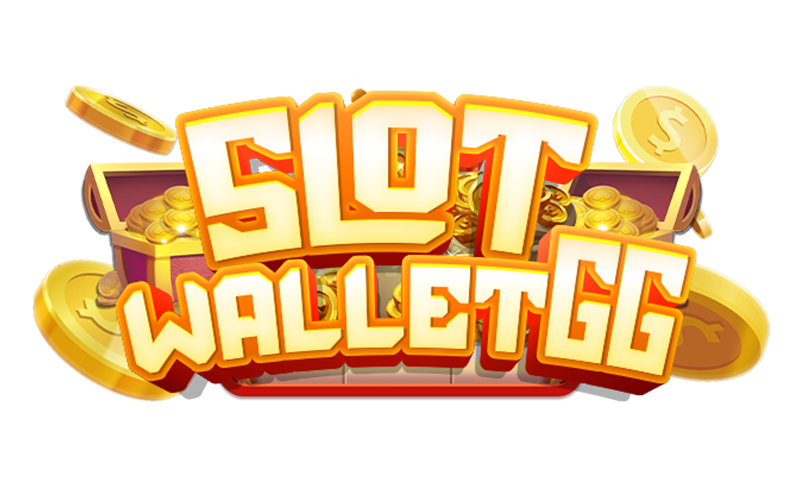สล็อตวอเลท สล็อตวอเลทเว็บตรง สล็อตวอเลทเว็บตรงไม่มีขั้นต่ํา สล็อตวอเลทเว็บตรงล่าสุด 2024 สล็อตวอเลทเว็บตรง777 สล็อตวอเลทเว็บตรง168 สล็อตวอเลทเว็บตรงล่าสุด สล็อตวอเลทเว็บตรงฝาก10รับ100 เกมสล็อตเว็บตรงวอลเล็ต เว็บสล็อตวอเลท เว็บสล็อตวอลเล็ต เว็บสล็อตวอเลทเว็บตรง สล็อตฝากวอเลทเว็บตรง สล็อตวอเลทเว็บตรง สล็อตเว็บตรงเติมวอเลท สล็อตเว็บตรงแตกง่ายวอเลท เว็บสล็อตแตกง่ายวอเลท สล็อตวอเลทเว็บตรงล่าสุด สล็อตวอเลทเว็บตรง ทางเข้าสล็อตวอลเล็ต สล็อตเว็บตรงวอลเล็ต
slotwallet111.org อีกหนึ่งผู้ให้บริการ สล็อตวอเลท เกมสล็อตแตกง่าย เว็บตรง ไม่ผ่านเอเย่นต์ ไม่มีขั้นต่ำ Slot True Wallet เปิดให้บริการรวมเกมสล็อตจากทุกค่าย รวบรวมเกมสล็อตง่าย ๆ ได้เงินจริง มาแล้ว เพียงเลือกเกมที่ให้รางวัลแจ็คพอตและโบนัสนับไม่ถ้วน เว็บสล็อตแตกง่าย รับประกันเว็บสล็อตสดไม่ผ่านเอเย่นต์ สล็อตวอเลทเครดิตฟรี ผู้เล่นได้รับแจ็คพอตเต็ม เป็นเว็บไซต์ถ่ายทอดสดที่เสนอโบนัสที่ใหญ่ที่สุดในอุตสาหกรรมเกมสล็อตออนไลน์ รวมถึงสล็อตค่ายใหญ่ทั้งหมด สูตรสล็อตออนไลน์ล้วนเป็นสูตรได้เงินจริงพร้อมกับสูตรสล็อต ทุกระบบรองรับมือถือทั้งระบบ iOS, Android และแม้แต่ระบบ Windows รวมถึงธุรกรรมการเงินเราเป็นเว็บสล็อตที่ใหญ่ที่สุด สล็อตวอเลท มีการใช้ระบบอัตโนมัติซึ่งทำให้ผู้เล่นสามารถฝากและถอนไอเทมได้อย่างรวดเร็ว เว็บสล็อตสด เรารวบรวมสล็อตยอดนิยม DreamTech, 918kiss, Pussy88, JOKER GAMING, PG SLOT, Fin88, JDB SLOT, SGSLOT, Jili Slot, SLOTXO และ 22winslot เป็นเกมสล็อตออนไลน์ที่น่าเล่นที่สุดในปี 2024 ส่งตรงจากค่ายเกมชื่อดัง สล็อตวอเลทเว็บตรง ด้วยเกมสล็อต คุณเพียงแค่ไปที่เว็บของเรา และแนะนำเกมสล็อตง่าย ๆ เพื่อทำโบนัสแตกและรับเงินจริง ด้วยระบบโบนัส ผู้เล่นพร้อมรับโบนัสสูงถึง 50% เพียงเพื่อความสนุก สล็อตวอเลท และสิ่งอำนวยความสะดวกสำหรับผู้เล่นตลอด 24 ชั่วโมง
สารบัญ
สล็อตวอเลท เว็บตรงไม่ผ่านเอเย่นต์ ได้มาตรฐานการันตรี รับประกันผู้เล่นว่าไม่มีการโกง
สล็อตวอเลทเว็บตรง สล็อตฝาก-ถอนวอลเล็ต เว็บสล็อตทรูวอเลท เว็บสล็อตฝากทรูวอลเล็ต ทรูมันนี่วอลเล็ทสล็อต สล็อตฝากวอเลทถอนธนาคาร แนะนําเว็บสล็อตวอเลท สล็อตเว็บตรงไม่ผ่านเอเย่นต์วอเลท เว็บสล็อตผ่านวอเลท เว็บสล็อตฝากวอลเล็ต ฝากสล็อตวอเลท สล็อตเว็บตรง100รับวอลเลท รวมเว็บสล็อตวอลเล็ต เว็บสล็อตเว็บตรงวอลเล็ต สล็อตpgเว็บตรงแตกหนักวอเลท เว็บสล็อตเว็บตรงวอเลท สล็อต777เว็บตรงวอเลท สล็อตเว็บตรงวอเลท777
สล็อตวอเลท สล็อตออนไลน์ เว็บสด ไม่ผ่านเอเย่นต์ เว็บสล็อต ที่ได้มาตรฐานการันตรี ไม่มีเอเย่นต์ รับประกันผู้เล่นว่าไม่มีการโกง มีเกมสล็อตมากมายที่ไม่ซ้ำใคร สล็อตวอเลท ไม่มีขั้นต่ํา ไม่มีเกมซ้ำซากจำเจ หลากหลายประเภทและไม่มีเอเย่นต์ เรียกได้ว่าเลือกเล่นตามใจตัวเองได้เลย ผู้เล่นสามารถเลือกเล่นและรับได้ตามถนัด เพราะการเลือกเล่นเกมที่เหมาะกับคุณทำให้คุณมีโอกาสลุ้นรับโบนัสก้อนโต เว็บสล็อต ล่าสุด แจ็คพ็อต สล็อตวอเลท ฝากถอนไม่มีขั้นต่ํา สล็อตออนไลน์ เข้าง่าย เว็บตรง มาตรฐานสากล ระดับโลก ไม่ผ่านเอเย่นต์ คมชัด สวย ไม่ผ่านคนกลาง กราฟฟิคไม่น่าเบื่อ เล่นลื่น ไร้การรบกวน พร้อมโบนัสพิเศษ เว็บ สล็อตวอเลท pg ด้วยการแนะนำบริการเพิ่มเติมตลอด 24 ชั่วโมงและเว็บสล็อตที่ถอดรหัสได้ง่ายในปี 2024 ผู้เล่นสามารถเข้าร่วม PGSlot, JOKER GAMING, SLOTXO, JILI Slot, JDB GAMING, VIVO GAMING, Spadegaming, manywinlot และค่ายเกมอื่น ๆ อีกมากมายเมื่อสมัครเป็นส่วนหนึ่งของเรา สล็อตวอเลท ฝาก20รับ100 เลือกเล่นสล็อต สล็อตออนไลน์ ผ่านเว็บไซต์โดยตรง ไม่ผ่านเอเย่นต์ และสร้างโอกาสทางการเงินได้ง่าย ๆ แค่เลือกสมัครสมาชิก
สล็อตวอเลท ยอดนิยมอันดับ 1 รองรับการเชื่อมต่อทุกระบบและทุกแพลตฟอร์ม
เว็บสล็อตยอดนิยมอันดับ 1 ใช้งานง่าย รองรับการเชื่อมต่อทุกระบบและทุกแพลตฟอร์มและให้คุณเล่นเกม สล็อตวอเลท เล่นด้วยเงินจริงได้ทุกรูปแบบบนเว็บไซต์สล็อตที่มีคนเล่นมากที่สุด และสร้างรายได้ให้กับผู้เล่น สะดวกสุด ๆ ในการหาเงินจากทุกที่ รองรับบนสมาร์ทโฟน iOS และ Android และรองรับบนแพลตฟอร์มคอมพิวเตอร์ สล็อตวอเลท เว็บสล็อตยอดนิยมอันดับ 1 เล่นได้ทุกที่ คุณสามารถทำกำไรได้ทุกที่ เว็บสล็อตยอดนิยม ระบบการฝากไม่ซับซ้อน ใช้ระบบฝากเงินที่ทันสมัย ทำรายการง่าย ๆ ผ่านระบบอัตโนมัติ ใช้เวลาเพียง 1 นาที รวมสล็อต wallet เว็บสล็อตยอดนิยมอันดับ 1 การเงินมั่นคง ไม่ต้องกลัวว่าจะไม่จ่าย จะหลักล้านหรือหลักร้อย สล็อตออนไลน์ ใหม่ล่าสุดก็พร้อมจ่ายด้วยโบนัสพิเศษสำหรับสมาชิก สล็อตวอเลทเครดิตฟรี คุณไม่ควรพลาดโอกาสในการเล่นเว็บไซต์ที่ดีที่สุดที่นี่

สล็อตวอเลท แตกง่าย เพียงสมัครเป็นส่วนหนึ่ง รับสิทธิ์ทดลองเล่นเกมสล็อตฟรี
ทดลองเล่นฟรี โบนัสสำหรับสมาชิกใหม่ สล็อตวอเลท เพียงสมัครเป็นส่วนหนึ่ง เว็บเรา เว็บตรง ทุกคนสามารถขอรับสิทธิ์ทดลองเล่นเกมสล็อตฟรีได้โดยตรง สล็อตวอเลท คุณจะเห็นรูปแบบ วิธีเล่นสล็อตจากค่ายเกมสล็อตทั้งหมด เว็บสล็อตสด พร้อมรับเทคนิคและแนวทาง ความมั่นใจ เล่นเกมสล็อตเว็บสด แจกจริงกว่า อยากลองเกมสล็อต สล็อตวอเลทเว็บตรง ค่ายไหน ลองได้ คุณสามารถเล่นได้โดยตรงผ่านเว็บไซต์ของเราที่นี่ ครบเครื่องจริง ๆ สามารถบอกคุณได้เมื่อคุณเข้าสู่เกม เว็บสล็อตที่ดีที่สุด ทุกคนได้ทดลองเกมสล็อตทั้งหมดก่อนเล่นเกมจริง ดังนั้นคุณจึงมั่นใจในรางวัลมากมาย โบนัส แจ็คพอต สล็อตวอเลท รับเครดิตฟรีจากเว็บไซต์ของเรา และนำเอาไปเลือกวางเดิมพันเกมสล็อตออนไลน์ได้เลย
ลงทุนน้อย
เริ่มต้นเพียง 1 บาท ไม่จำเป็นต้องมีทุนเยอะก็สามารถเล่นสล็อตและลุ้นรางวัลใหญ่ได้
กำไรสูง
เกมสล็อตของเรามีโบนัสแตกง่าย รางวัลใหญ่ลุ้นรับได้ทุกวัน
สะดวก
ฝาก-ถอน ผ่านวอเลท รวดเร็วทันใจ ไม่ต้องรอคิว ไม่ต้องเสียเวลา
ปลอดภัย
ระบบของเราทันสมัย มั่นคง จ่ายจริง ไม่โกง
ครบครัน
เกมสล็อตมากมายจากทุกค่าย เลือกเล่นได้จุใจ ไม่ซ้ำ

สล็อตวอเลท ถอนเงินอัตโนมัติ ระบบการเงินที่ดีที่สุด
สล็อตวอเลท ถอนเงินอัตโนมัติสำหรับทุกคน เลือกทำธุรกรรมทางการเงินบนเว็บไซต์ของเรา สล็อตวอเลท ฝากถอน ทรูวอเลท สะดวกและใช้งานง่าย เว็บสล็อตออนไลน์ของเราเป็นระบบการเงินอัตโนมัติ และเว็บสดสล็อต จะถูกเลือกโดยทุกคนที่จะใช้ ระบบการเงินของ สล็อตวอเลท รายการของขวัญจริงจากเว็บไซต์ของเรา สะดวกสำหรับผู้เล่น รวดเร็วทันใจ พร้อมรายการในเมนูของเว็บไซต์เอง เว็บสล็อตที่ดีที่สุด ไม่ต้องแจ้งที่ไหนให้เสียเวลา รวมสล็อต wallet หากคุณเล่นเกมสล็อตบนเว็บไซต์ของเรา คุณสามารถถอนเงินที่ได้จากการเล่นเกมสล็อต หรือเลือกฝากเพื่อเล่นเกมใน สล็อตวอเลทเครดิตฟรีได้ตลอดเวลา ไม่มีการจำกัดเวลาบนเว็บไซต์ของเราได้ตามต้องการ ตลอด 24 ชั่วโมง
ถอนเงินอัตโนมัติ
ไม่ต้องแจ้งฝ่ายบริการ รอรับเงินได้ทันทีภายใน 30 วินาที
ฝากถอนไม่มีขั้นต่ำ
สะดวกทุกการฝากถอน เล่นได้ทุกที่ทุกเวลา
รองรับ True Wallet
เติมเงินง่ายผ่านแอป True Wallet โดยไม่ต้องโยกเงิน
ระบบอัตโนมัติ 100%
รวดเร็ว ปลอดภัย มั่นใจได้ทุกการทำธุรกรรม
โปรโมชั่นสุดคุ้ม
สมัครสมาชิกใหม่รับโบนัส 100% ฝาก20รับ100 และโปรโมชั่นอื่นๆ อีกมากมาย

5 ค่ายเกมส์ สล็อตวอเลท น่าเล่นที่สุดในปี 2024
5 ค่ายเกมส์มาแรง เว็บสล็อตวอเลท แตกง่าย ล่าสุด 2024 ความหลากหลายและโปรโมชั่นที่ดีที่สุดไว้ตลอด สล็อตวอเลท นำเสนอเว็บไซต์ที่แตกง่าย แน่นอนว่าหากคุณชอบเล่นสล็อตต้องไม่พลาดเว็บไซต์นี้ ด้วยเกมสล็อตมากกว่า 1,000 เกมให้เลือก โบนัสสล็อตออนไลน์และของสมนาคุณที่คุณไม่ควรพลาด สล็อตวอเลท เว็บสล็อตแตกง่าย ด้วยวิธีนี้คุณสามารถเล่นเกมสล็อตบนมือถือได้ทุกเมื่อที่คุณต้องการ เว็บสล็อต ทำเงินง่าย ไม่มีขั้นต่ำ เลือกวางเดิมพันเกมสล็อตออนไลน์ ไม่ต้องลงทุน เว็บสล็อตแตกง่าย ตรวจสอบให้แน่ใจว่าคุณสามารถสร้างรายได้และรวยเร็ว สล็อตวอเลทเว็บตรง เนื่องจากเว็บสล็อตที่รวบรวมไว้จะ ไม่มีเอเย่นต์ รับโอนได้เงินจริง มีระบบฝากเงิน วิธีที่สะดวกกว่ารวดเร็ว ไม่ซับซ้อน สล็อตวอเลท เว็บเกมสล็อตที่มีเกมให้เลือกเล่นมากมาย แถมโบนัสเล่นเกมฟรี โบนัสเครดิตฟรี เลือกวางเดิมพันเกมสล็อตออนไลน์ ทำเงินจากเกมสล็อตแบบไม่ต้องลงทุนก่อน
1. PGSLOT
เว็บสล็อตยอดนิยม มีเกมให้เลือกเล่นมากมาย กว่า 1,000 เกม โบนัสแตกบ่อย แตกง่าย ฟีเจอร์พิเศษในเกมมากมาย ฝาก-ถอน ผ่านวอเลท ไม่มีขั้นต่ำ สะดวกรวดเร็ว
ตัวอย่างเกม: Candy Burst, Mahjong Ways, Fortune Gods
2. SLOTXO
เว็บสล็อตออนไลน์ รูปแบบใหม่ เล่นง่าย อินเทอร์เฟซใช้งานง่าย โบนัสเยอะ โปรโมชั่นสุดคุ้ม แจกเครดิตฟรี รองรับวอเลท ฝาก-ถอน รวดเร็วทันใจ
ตัวอย่างเกม: Roma, 5 Dragons, Lucky God
3.JOKER GAMING
เว็บสล็อตที่มีเกมให้เลือกเล่นหลากหลาย ค่ายเกมชั้นนำ โบนัสใหญ่ แตกง่าย รางวัลแจ็กพอตสูง ระบบเกมเสถียร เล่นลื่นไหล ไม่มีสะดุด
ตัวอย่างเกม: Fishing God, Hot Fruits, Golden Dragon
4. AMBSLOT
เว็บสล็อตเว็บตรง ฝาก-ถอน วอเลท ไม่มีขั้นต่ำ ระบบออโต้ รวดเร็วทันใจ ไม่ต้องรอ เกมสล็อตหลากหลาย ค่ายเกมดัง
ตัวอย่างเกม: Caishen Wins, Lucky Twins, Koi Gate
5. 918KISS
เว็บสล็อตออนไลน์ เล่นง่าย ได้เงินจริง รองรับวอเลท สะดวก ปลอดภัย โปรโมชั่น menarik โบนัสเพียบ
ตัวอย่างเกม: Pussy888, Fortune Mouse, Dragon King

สล็อตวอเลท รวมเกมสล็อตทุกค่าย มีครบมากกว่า 50 ค่ายเกมส์
สล็อตวอเลท รวมสล็อตจากทุกค่ายให้เลือกเล่นเลย เข้าถึงได้ตลอด 24 ชั่วโมง ไม่ว่าคุณจะอยู่ที่ไหน ค่ายเกมสล็อตออนไลน์ทั้งหมดรวมอยู่ในเว็บไซต์เดียว สามารถเลือกวางเดิมพันเกมสล็อตออนไลน์ได้ทั้งหมดโดยไม่คำนึงถึงค่ายเกม ที่นี่คุณสามารถเล่นเกมมากกว่า 1,000 เกม รวมถึงสล็อตจากค่ายเกมสล็อตทั้งหมด ในเว็บไซต์เดียวกัน สล็อตวอเลท ไม่มีขั้นต่ํา ไม่ว่าจะเลือกทำรายการฝาก หรือถอน ก็สามารถเลือกทำรายการได้อย่างเต็มที่อย่างต่อเนื่อง ได้เงินแน่นอนในการเล่น เว็บสล็อตที่น่าเล่นที่สุดเว็บหนึ่ง สล็อตวอเลท ฝากถอนไม่มีขั้นต่ํา เว็บนี้รวมสล็อตทุกค่าย เล่นง่าย รวมทุกเว็บ รวยทุกค่าย มาไว้ด้วยกัน สมัครครั้งเดียวเล่นได้ทุกเกม โบนัส เกมฟรี และแจ็คพอตแตกง่ายจากทุกที่ รวมสล็อตทุกภาษาไว้ในเว็บเดียว สล็อตวอเลท pg โบนัส 100% ถอนง่าย แค่สมัครเป็นสมาชิก รับโบนัสฟรี เร็ว ได้เงินจริง ได้เงิน เล่นง่าย ภาพสวย เสียงสด รวมสล็อตจากค่ายใหญ่ทั้งหมด ตื่นเต้นตลอด ฟีเจอร์โบนัสและแจ็คพอตมีให้ในทุกเกม เว็บสล็อต สล็อตวอเลท ฝาก20รับ100 ระบบอำนวยความสะดวกผู้เล่นอย่างต่อเนื่อง การผสมผสานระหว่างเกมพนันที่สนุกและน่าสนใจ เกมใหม่ สามารถเลือกเข้าเล่นทั้งหมด ได้ผ่านทางหน้าเว็บของเรา
รวมสล็อตทุกค่าย
เล่นเกมสล็อตจากค่ายดังมากมาย ไม่ว่าจะเป็น PG SLOT, SLOTXO, JOKER GAMING, AMB BET, LIVE22 และค่ายอื่นๆ อีกมากมาย
ฝาก-ถอน ผ่านวอเลท
สะดวก รวดเร็ว ปลอดภัย โดยไม่ต้องมีบัญชีธนาคาร
ไม่มีขั้นต่ำ
ฝาก-ถอน ได้ตามต้องการ เริ่มต้นเพียง 1 บาท
โบนัสเพียบ
โปรโมชั่นสุดคุ้ม เครดิตฟรี โบนัสแรกเข้า และโบนัสอื่นๆ อีกมากมาย
เล่นง่าย
รองรับทุกอุปกรณ์ เล่นได้ทุกที่ทุกเวลา
ปลอดภัย มั่นคง
เว็บไซต์มาตรฐาน มั่นใจได้ทุกการเดิมพัน
สล็อตวอเลท เล่นเกมสล็อตออนไลน์เว็บตรง 24 ชั่วโมง
เว็บสล็อต ไม่ผ่านเอเย่นต์ สล็อตวอเลท จัดเต็ม ของแถมไม่อั้น พร้อมโบนัส เมื่อเล่นเว็บสล็อตแตกง่าย ไม่มีเอเย่นต์รับโอน ซึ่งรวมถึงเว็บไซต์สล็อตออนไลน์ให้เล่นด้วย เลือกวางเดิมพันผ่านทางเว็บสล็อตลิขสิทธิ์แท้ 100% ที่มีค่ายเกมสล็อตทั้งหมดและไม่ผ่านเอเย่นต์ อยากเล่นสล็อตไม่จำกัด ไม่เบื่อ ไม่จำเจ สล็อตวอเลท เกมยอดนิยมตามสล็อตที่เปิดให้บริการ เว็บสล็อตตรง ไม่ผ่านเอเย่นต์ ไม่ต้องฝาก ถอนไว ไม่ต้องรอ รวมสล็อต wallet ไม่ต้องขออนุญาตใคร เล่นสดและรับเงิน เว็บสดเป็นศูนย์รวมเกมส์สล็อตออนไลน์ ออกง่าย ไม่ต้องผ่านเอเย่นต์ เกมอื่น ๆ มากมายขึ้นชื่อเรื่องความโปร่งใส ยุติธรรม ดาวน์โหลดง่าย และสามารถเล่นได้บนทุกอุปกรณ์ สล็อตวอเลทเครดิตฟรี เลือกเกมที่จะเล่น แตกง่าย มั่นคง เชื่อถือได้ ซื่อสัตย์ จ่ายจริง เว็บตรง ไม่มีเอเย่นต์ ฝากขั้นต่ำ ไม่ต้องถอน 1 บาท เล่นหรือเล่นสล็อต 3D บนมือถือ ฝากเข้าเล่นฟรี รับโบนัสเครดิตฟรี เลือกเกม ด้วยการป้อนข้อมูลจากเว็บโดยตรง ผ่านตัวแทนใด ๆ สล็อตวอเลท คุณสามารถกำหนดเงินที่คุณต้องการจากเกมของคุณได้ คุณไม่ควรพลาดความจริงที่ว่าคุณมีเงินรางวัลรวมที่ใหญ่ที่สุด
เว็บตรง ไม่ผ่านเอเย่นต์
มั่นใจได้ว่าปลอดภัย จ่ายจริง ไม่มีโกง เล่นผ่านเว็บไซต์โดยตรง ไม่ต้องผ่านตัวกลาง หมดปัญหาเรื่องโดนโกงหรือปิดเว็บหนี ควบคุมระบบการเงินด้วยตัวเอง
ฝาก-ถอน ผ่านวอเลท
สะดวก รวดเร็ว ทันใจ รองรับ True Money Wallet ฝาก-ถอน ไม่มีขั้นต่ำ ทำรายการได้ตลอด 24 ชั่วโมง
เกมสล็อตหลากหลาย
คัดสรรเกมสล็อตยอดนิยมจากทุกค่าย มาให้คุณเลือกเล่น มากกว่า 1,000 เกม จาก 20 ค่ายดัง สล็อต 3D, สล็อตคลาสสิก, สล็อตแบบ Megaways เกมใหม่ ๆ อัพเดททุกสัปดาห์
โบนัสและโปรโมชั่น
พิเศษสำหรับสมาชิกใหม่และเก่า โบนัสเครดิตฟรี 100% โบนัสฝากแรก โบนัสคืนยอดเสีย โปรโมชั่นรายวัน รายสัปดาห์ ชิงรางวัลใหญ่ แจ็คพอต
ระบบอัตโนมัติ
ฝาก-ถอน รวดเร็วทันใจ ภายใน 3 วินาที สมัครสมาชิกอัตโนมัติ เล่นเกมผ่านระบบอัตโนมัติ ตรวจสอบยอดเงิน เครดิต
เล่นได้ทุกที่ทุกเวลา
รองรับการเล่นบนมือถือและคอมพิวเตอร์ เล่นผ่านเว็บเบราว์เซอร์ โดยไม่ต้องติดตั้งแอป รองรับระบบ iOS และ Android
บริการลูกค้า
ทีมงานมืออาชีพพร้อมให้บริการ 24 ชั่วโมง ช่วยเหลือ แก้ไขปัญหา ตอบคำถาม ให้คำแนะนำเกี่ยวกับเกม
5 เกมส์ทำเงิน สล็อตวอเลท แนะนำที่เล่นง่ายที่สุดในปี 2024
ขอแนะนำ 5 เกมส์ทำเงินของ สล็อตวอเลทเว็บตรง เป็นหนึ่งในเกมสล็อตที่ดีที่สุดในแอพเกม สล็อตแตกง่าย เว็บสล็อตแท้ ถือว่าเป็นสล็อตที่มีโอกาสชนะสูงมาก ฟีเจอร์ฟรีสปินรวมอยู่ด้วยเสมอ และ Wilds จะปรากฏขึ้นบ่อยครั้ง สล็อตแตกง่าย สล็อตวอเลท 10 รับ 100 อีกทั้งยังมีพนักงานคอยให้บริการลูกค้า สิ่งนี้จะให้การเข้าถึงระดับ VIP แก่สมาชิกของแต่ละเว็บไซต์ เลือกทำรายการผ่านทางหน้าเว็บได้แบบสะดวกสบาย ฝากถอนไม่มีขั้นต่ำ wallet สิทธิพิเศษมากมาย สล็อตวอเลท ไม่มีขั้นต่ํา เพื่อเล่นเกมทั้งหมดและราคาเล่นขั้นต่ำเริ่มต้นเพียง 10 บาท สล็อตวอเลท ฝากถอนไม่มีขั้นต่ํา มีระบบฝากและถอนอัตโนมัติเพื่อให้ทุกธุรกรรมทางการเงินสามารถทำได้อย่างรวดเร็ว มีเกมมากมาย เกมที่มีให้เลือกเล่นไม่ว่าผู้เล่นคนไหน ก็สามารถเล่นเกมกับเว็บไซต์ที่ให้บริการสล็อตง่าย ๆ ได้โดยไม่คำนึงถึงค่ายเกม เพราะสมัครเข้าเล่นที่นี่ เลือกวางเดิมพันได้เลย ครบทุกค่าย
1.RomaX
เกมสล็อตคลาสสิก 5 รีล 3 แถว รูปแบบการเล่นเข้าใจง่าย สัญลักษณ์ Wild ช่วยเพิ่มโอกาสในการทำเงิน โบนัสแตกบ่อย เหมาะสำหรับผู้เริ่มต้น
2.Candy Pop
เกมสล็อตธีมลูกกวาด แสนน่ารัก เล่นสนุก กราฟิกสีสันสดใส ฟีเจอร์ฟรีสปิน และตัวคูณรางวัลมากมาย เหมาะสำหรับผู้เล่นทุกเพศทุกวัย
3.Koi Gate
เกมสล็อตปลาคราฟ ธีมจีน โบนัสใหญ่ โบนัสฟรีสปิน ตัวคูณรางวัลสูง ลุ้นรางวัลใหญ่ได้ง่าย เหมาะสำหรับผู้เล่นที่ต้องการความท้าทาย
4.Big Bass Bonanza
เกมสล็อตตกปลา 3D เล่นง่าย กราฟิกสวยงาม โบนัสฟรีสปิน ฟีเจอร์พิเศษมากมาย ลุ้นรางวัลใหญ่ได้หลายเท่า
เหมาะสำหรับผู้เล่นที่ต้องการความตื่นเต้น
5.Sweet Bonanza
เกมสล็อตผลไม้ ธีมน่ารัก ฟีเจอร์ Tumble ช่วยให้ลุ้นรางวัลซ้ำ ฟรีสปิน และตัวคูณรางวัล เหมาะสำหรับผู้เล่นที่ชื่นชอบความสนุกสนาน
สล็อตวอเลท เล่นเกมสล็อต True Wallet โบนัสเพียบ
Slot WALLET สล็อตวอเลท ฝากถอนเงินไม่มีขั้นต่ำ ผ่านระบบ True Wallet สล็อต ฝากวอลเล็ท บริการอัตโนมัติ ความสะดวกสบายสำหรับผู้เล่นและสมาชิกของเรา สล็อตวอเลทเว็บตรง เว็บที่มาแรงที่สุดในปี 2024 บริการ เครดิต เล่นเกมสล็อต ฝาก-ถอน ด้วย True Money Wallet (ทรูมันนี่ วอลเล็ท) วิธีเติมเงิน SLOT TRUE WALLET ที่ดังมาก สล็อตออนไลน์ เข้าถึงแอพ True Wallet และบริการธนาคารทั้งหมดในประเทศไทย ตลอด 24 ชั่วโมง สล็อตวอเลท ไม่มีขั้นต่ํา เว็บไซต์ของเราเปิดให้บริการ slot wallet ซื่อสัตย์ มั่นคง เชื่อถือได้ 100% Slot AUTO WALLET เราคือผู้ให้บริการ เกมสล็อตออนไลน์ PG SLOT, SLOTXO, AMB POKER, JOKER GAMING, EVOPLAY และอีกมากมายจากฐานที่ดีที่สุด สล็อตเว็บตรง ที่จะพาคุณไปสนุกสุดขีด ลงทะเบียนเฉพาะสล็อตสมาชิก Wallet ที่มีเกมสล็อตหมุนเวียนบ่อยที่สุด รวมถึงเกมตกปลา การฝากสล็อต การโอนที่รวดเร็ว และโบนัสรายวัน สล็อตวอเลทเครดิตฟรี จากค่ายสล็อตทั้งหมด คุณสามารถเล่นเกมสล็อตกับเราได้ง่าย ๆ พบกับเกมสล็อตที่แตกง่าย แตกลอด 5 นาที พร้อมลุ้นรับสิทธิ์มากมาย

สล็อตวอเลท เล่นสล็อตเงินจริง ถอนได้ 100%
SLOTWALLET เล่นเกมสล็อต ฝาก สล็อตวอเลท กับ True Wallet สำหรับสมาชิกใหม่ โบนัสพิเศษโดยตรง 100% คุ้มทั้งคู่ ที่จะนำคุณไปสู่ความสนุกสุดขีด สล็อตและเกมยิงปลาแตกอย่างง่าย เกมสล็อต ระบบฝากเงินอัตโนมัติส่วนใหญ่ ศูนย์กลางเว็บเกมสล็อตรวมค่ายเกมทั้งหมด สล็อตวอเลท ฝากถอนไม่มีขั้นต่ํา ด้วยเกมสล็อต PGSLOT มากกว่า 300 เกม วอลเล็ท รับประกันความปลอดภัย มั่นคง และเชื่อถือได้ หากคุณนึกถึงสล็อตและสล็อตทรูมันนี่ วอลเล็ท คุณต้องนึกถึงเราเท่านั้น โบนัสที่มีค่ามากมายกำลังรอคุณอยู่ สมัครสล็อต TRUE WALLET กับเราง่าย ๆ หากต้องการใช้บริการสล็อต ฝากและถอนเงิน True Wallet ให้ไปที่เมนูสมัครสมาชิก slot wallet หรือคลิกที่คำขอเป็นสมาชิกด้านล่าง คุณสามารถสมัครสล็อตฝาก Wallet ได้ง่าย ๆ โดยไม่ต้องมีบัญชีธนาคาร รวมสล็อต wallet คุณสามารถฝากด้วย True Wallet ทำตามขั้นตอนที่แนะนำผ่านทางเว็บไซต์ โบนัสฟรี 2024 คุณสามารถเล่นเกมกับเรา ลงทะเบียนสล็อต Wallet ได้ง่าย ๆ และสนุกไปกับสล็อตเว็บตรง ฝากถอน ไม่มีขั้นต่ำ ผ่านทางหน้าเว็บได้ตลอด 24 ชั่วโมง
สมัครสมาชิกใหม่ สล็อตวอเลท รับสิทธิพิเศษมากมาย
สมัครสมาชิก สล็อตวอเลท วันนี้ ฝากเงินเพื่อเล่นกับเราและรับเครดิตฟรี 100% ในการฝากครั้งแรก หรือสูงสุด 8,000 บาท รับโบนัสพิเศษมากขึ้น หากคุณไม่ต้องการโบนัส ทุกคนจะได้รับเครดิตโบนัสพิเศษฟรี จากเว็บไซต์ของเรา เว็บสล็อตออนไลน์ แจกเครดิตฟรี สล็อตวอเลท จากทุกค่ายในเกมสล็อต รางวัลแจ็คพอตหนักและรวดเร็วใน 5-7 นาที เล่นได้ทุกระบบทั้ง Mobile iOS & Android, PC และ Notebook เพียงเชื่อมต่ออินเทอร์เน็ตและ WiFi คุณก็สามารถเข้าร่วมเล่นเกมสนุก ๆ ได้ หารายได้ออนไลน์ทุกวัน จากการเลือกเล่นเกม ผ่านทางเว็บสล็อตที่นี่
สล็อต WALLET มีข้อดีและโบนัสพิเศษมากมาย เสมอ ทุกคนเพียงแค่สมัครสมาชิก สล็อตวอเลทเว็บตรง เลือกรับโบนัสพิเศษจากเว็บไซต์ของเรา หากคุณไม่มีเงินมาก ไม่ต้องกังวล เดิมพันขั้นต่ำผ่านทางเว็บสล็อตออนไลน์ ทางเข้าสล็อตเว็บตรงของเราได้ที่นี่ หากคุณฝากเงิน เล่นหลักสิบ หลักร้อย หรือแม้แต่หลักพัน เว็บไซต์ของเราเป็นเว็บไซต์จริง 100% ดังนั้นคุณจะได้รับโบนัสที่ดี สล็อตวอเลท จากเว็บของเราเสมอ เราคือผู้ให้บริการพนันออนไลน์โดยตรง ทุกรูปแบบ ถอนเงินได้โดยตรงเข้าบัญชี ความปลอดภัยสูง มั่นคง โบนัสแตกจริง แจกเครดิตฟรี 100%
ทำไม สล็อตวอเลท ถึงได้รับความนิยมมากที่สุดในตอนนี้?
ทำไม สล็อตวอเลท ถึงได้รับความนิยม และที่เข้ามาสมัครสมาชิกที่ดึงดูดผู้เล่นมากมาย ฝากเล่นดีมาก ไม่มีตกหล่น สล็อต wallet เติมเงิน ถอนเงิน ผ่านทางระบบอัตโนมัติ เล่นผ่านเว็บไซต์โดยตรง สล็อตออนไลน์ ฝากถอนเงินง่าย ๆ สล็อตวอเลท ฝากถอนไม่มีขั้นต่ํา หากคุณไม่มีบัญชีธนาคารคุณสามารถเปิดเงินเพื่อเล่น และทำรายการฝาก-ถอนโดยตรงผ่านแอพ True Wallet (ทรูมันนี่วอลเล็ท) ซึ่งเป็นที่นิยมมากในปัจจุบัน ใช้หมายเลขเบอร์โทรศัพท์ที่ลงทะเบียนกับแอพพลิเคชัน True Money Wallet สามารถทำธุรกรรมทางการเงินได้ในเวลาเพียง 10 วินาที ไม่จำเป็นต้องมีบัญชีธนาคารเพื่อความปลอดภัย รวมสล็อต wallet เติมเงินและถอนเงินจากบัญชีของสมาชิกแต่ละคนด้วยตนเอง ไม่จำเป็นต้องมีผู้ดูแลระบบ ฝากและถอนเงินเพื่อไม่ต้องยุ่งยากอีกต่อไป สำหรับนักเดิมพันที่เลือกทำรายการฝาก-ถอน สล็อตวอเลท ด้วยบัญชีธนาคาร ก็สามารถเลือกทำรายการได้ง่าย ผ่านทางหน้าเว็บปกติ สะดวกสบาย ใช้เวลาสั้น ๆ ในการทำรายการฝาก-ถอน ไม่ยุ่งยากเช่นเดียวกัน
เหตุผลที่สล็อตวอเลทได้รับความนิยมอย่างสูง
- ความสะดวก รวดเร็ว: ฝากถอนเงินผ่านทรูวอเลทได้โดยตรง ไม่ต้องโยกเงิน รวดเร็วทันใจภายใน 30 วินาที เล่นได้ทุกที่ทุกเวลา ผ่านมือถือ รองรับทั้งระบบ iOS และ Android
- ความปลอดภัย มั่นคง: ระบบฝากถอนอัตโนมัติ ปลอดภัย ไร้กังวล ควบคุมการใช้จ่ายได้ง่าย ผ่านแอปทรูวอเลท ไม่ต้องเปิดเผยข้อมูลบัญชีธนาคาร
- โปรโมชั่นพิเศษ: เพลิดเพลินกับโปรโมชั่น ฝาก-ถอน ผ่านทรูวอเลท รับโบนัสเพิ่ม โปรโมชั่น สล็อตวอเลท เครดิตฟรี และโปรโมชั่น คืนยอดเสีย
- เกมสล็อตหลากหลาย: ตอบโจทย์ทุกความต้องการด้วยเกมสล็อตมากมาย จากค่ายเกมชั้นนำ อัพเดทใหม่ล่าสุด อยู่เสมอ เล่นง่าย ได้เงินจริง
- เหมาะกับผู้เล่นทุกระดับ: เหมาะสำหรับทั้งผู้เล่นมือใหม่และมืออาชีพ เดิมพันขั้นต่ำเพียง 1 บาท เหมาะกับผู้เล่นทุนน้อย
สล็อตวอเลท ระบบรวดเร็ว ปลอดภัย เกมหลากหลาย บริการ 24 ชั่วโมง
ตอบโจทย์นักเดิมพันยุคใหม่ สล็อตวอเลท เกมสล็อตยุคใหม่ ประกอบด้วยความสะดวก รวดเร็ว ปลอดภัย รองรับ สล็อต True Wallet ฝาก-ถอน ไม่มีขั้นต่ำ ตัวเลือกเกมหลากหลาย และโปรโมชั่นสุดคุ้ม สมัครสมาชิกวันนี้ สัมผัสประสบการณ์การเล่น สล็อตวอเลท ที่ดีที่สุด สล็อตวอเลทเว็บตรง กำลังได้รับความนิยมอย่างมากในปัจจุบัน สล็อต ฝากถอน true wallet เว็บตรง 888pg ดึงดูดผู้เล่นจำนวนมหาศาล ด้วยเหตุผลหลักๆ สะดวก รวดเร็ว ฝาก-ถอนเงิน ผ่านระบบอัตโนมัติ รวดเร็วทันใจ ภายใน 10 วินาที เล่นผ่านเว็บไซต์โดยตรง ไม่ต้องดาวน์โหลดแอปพลิเคชัน รองรับ True Wallet (ทรูมันนี่วอลเล็ท) แอปพลิเคชันยอดนิยม ใช้หมายเลขเบอร์โทรศัพท์ สะดวก ไม่ต้องมีบัญชีธนาคาร
การเล่นสล็อตออนไลน์ผ่านวอเล็ตที่ปลอดภัยและมีการรองรับ True Wallet ที่ให้บริการโดยรวดเร็วและตอบสนองต่อความต้องการของผู้เล่นในช่วง 24 ชั่วโมงตลอดทั้งวัน แถมด้วยโปรโมชั่น 10รับ100 20รับ100 โดยมีจุดเด่นดังนี้ การปลอดภัย สล็อตวอเลทนำเสนอ 19รับ100 4รับ100 ฝาก5รับ100 ที่มีระบบความปลอดภัยที่มั่นคงสูงสุดสำหรับผู้เล่น โดยมีการใช้เทคโนโลยีการเข้ารหัสข้อมูลที่ทันสมัยเพื่อปกป้องข้อมูลส่วนตัวและการทำธุรกรรมทางการเงินของผู้เล่นอย่างมีประสิทธิภาพ รองรับ สล็อต ฝาก-ถอน true wallet ไม่มี บัญชีธนาคาร พร้อมให้บริการระบบชำระเงินผ่าน True Wallet ซึ่งเป็นวิธีการชำระเงินที่สะดวกและปลอดภัยสำหรับผู้เล่น ทำให้สามารถทำธุรกรรมได้ง่ายและรวดเร็ว บริการ 24 ชั่วโมง สล็อตวอเลทให้บริการลูกค้าตลอด 24 ชั่วโมงตลอดทั้งสัปดาห์ โดยมีทีมงานคอยให้ความช่วยเหลือและแก้ไขปัญหาของผู้เล่นในทุกข้อสงสัย สล็อตวอเลทเป็นทางเลือกที่ดีสำหรับผู้เล่นที่ต้องการความปลอดภัยในการเล่นสล็อตออนไลน์ พร้อมด้วยความสะดวกสบายและการบริการที่เป็นเวลาตลอดทั้งวัน
FAQs คำถามที่พบบ่อย
ได้ สามารถเล่นสล็อตวอเลทบนมือถือสมาร์ทโฟนทั้งระบบ iOS และ Android
ขั้นต่ำในการฝาก-ถอนเงินสล็อตวอเลทขึ้นอยู่กับแต่ละเว็บไซต์ โดยทั่วไปจะอยู่ที่ 1 บาท
ได้ สามารถเล่นสล็อตวอเลทได้เงินจริง แต่ทั้งนี้ขึ้นอยู่กับฝีมือและดวงของผู้เล่น


